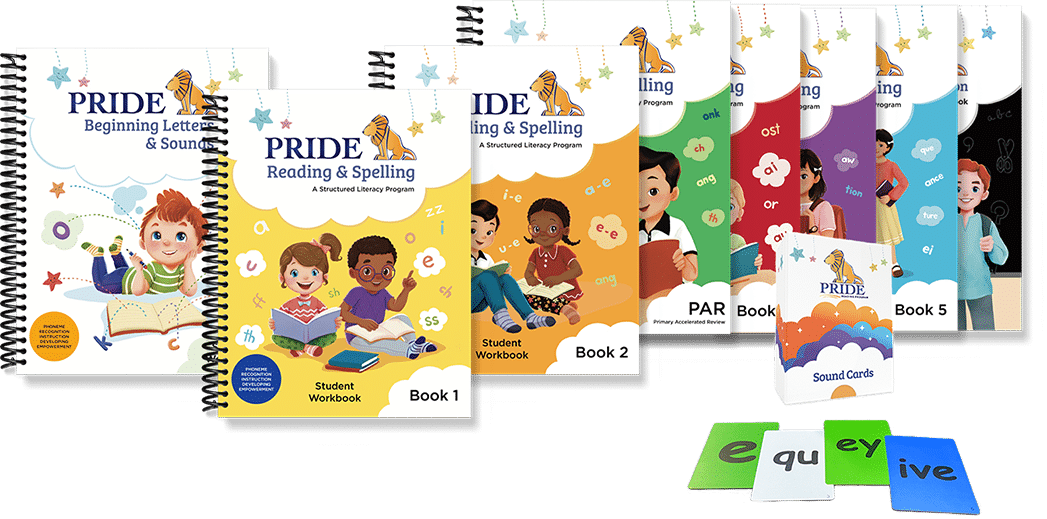Phonological Awareness is the ability to hear and manipulate the sounds of spoken language. It is the foundation of reading and is a critical component to future reading skills, especially for children with language processing disorders, such as dyslexia, auditory processing, speech deficits, etc. Although many children’s brains are “wired” to learn this skill easily, a lot of children need direct teaching. On today’s post, I am going to give you tips and strategies for teaching phonological awareness.
Practice Rhyming
Rhyming is the first step in teaching phonological awareness and helps lay the groundwork for beginning reading development. Rhyming draws attention to the different sounds in our language and that words actually come apart. For example, if your child knows that jig and pig rhyme, they are focused on the ending ig.
Read Rhyming Stories and Poems
You can begin introducing rhymes by reading a lot of rhyming stories and poems together with your child . As you read, you can begin drawing attention to the sounds of the rhyme. For example you can say, “I hear rhyming words! Dog and Bog rhyme!”
You can also ask your child to predict the next word in the rhyming story. For example you can say, “The cat sat on the ……” and wait for your child to fill in the blank.
As you read rhyming books and poems together with your child, really exaggerate the sounds of the rhyming words. Draw a lot of attention to the rhyme. Some examples of rhyming books are Llama Llama Red Pajama, Jamberry, Chicka Chicka Boom Boom, Sheep in a Jeep, etc.
Sing Rhyming Songs and Rhyming Chants
Sing rhyming songs and rhyming chants a lot with your child. Singing is so easy to fit into your daily schedule, as you can basically break out in song or chant any time of the day.
Some Examples of Rhyming Songs and Chants are: Twinkle Twinkle Little Star, 5 Little Monkeys, Down By the Bay, Baa, Baa, Black Sheep, I Know an Old Lady, etc.
Rhyming Practice
Once you have introduced rhyming, you can help your child to identify and practice rhymes by manipulating, adding, deleting or substituting sounds in words.
Some examples of doing this are:
“Tell me all the words you know that rhyme with the word “hat.”
“Close your eyes. I am going to say two words. If they rhyme, raise your hand. If they don’t shake your head.”
“Say the word hat. Good. Say the word hat again, but change the /h/ to /b/. Good! Hat and Bat rhyme!
“Listen to these three words – mop, plop, tag. Which of these does not rhyme?”
Rhyming is one of those reading skills that is really fun to work on and kids like doing it. If you want to learn more about how Children Learn to Read, please view our FREE Webinar: How Children Learn to Read
Practice Syllable Division
Breaking up words into syllables or chunks is the second step in teaching phonological awareness. Syllabication helps children learn to read and spell difficult words. When a child is stuck on a difficult word, they can use syllabication rules to figure it out.
Count the Syllables
One activity that helps a child pull apart the syllables in a word is to count them. This can be done by clapping each syllable.
You can start by counting (actually clapping) the number of syllables in your child’s own name. Ja-son (clap, clap). Jon-a-than. (clap, clap, clap).
You can also clap out the days of the week Tues-day, the months of the year, Sep-tem-ber, and fun words like cu-cum-ber or Cin-der-el-la.
Chin Dropping
If your child is having trouble understanding syllables, try using “chin dropping.” This technique will help your child really “feel” the syllables. Place your hand under your chin. Now, say a multisyllabic word aloud. Every time your chin drops, that is one syllable!
Phonemic Awareness
Phonemic Awareness is the most important step in teaching Phonological Awareness. Phonemic Awareness means that your child is able to manipulate the individual sounds in spoken language.
Sound Identification
You can begin working on sound identification by asking your child to match the very first sounds in words and then the final sounds. It is helpful to have a set of cards with pictures of everyday objects (man, boy, girl, cat, dog, house, book, etc.). You can also cut out pictures from magazines and use those. Once your child is successful at matching beginning sounds, work on ending sounds.
“Say the word bat. What is the first sound you hear in the word bat?” (b) What is the last sound you hear in the word bat?
Sound Deletion and Substitution
You can ask your child to repeat a word and give the first, middle, and last sounds of the word. Then you can change a sound in the word. By manipulating and playing with these sounds in words, the child begins to understand the concepts of language and build a strong reading foundation.
“Say rat. Say rat again but this time, instead of /t/, say /g/.” (rag)
“Say cab. Say cab again but this time, instead of /k/, say /l/.” (lab)
“Say jam. Say jam again but this time, instead of /j/, say /y/.” (yam)
In Summary
Phonological awareness skills are the basis for reading and without this important skill, potential reading difficulties might occur in the early reading stage. A child who has strong and solid phonological skills will have a strong reading foundation to develop with.
Thank you for reading my post today. You might also enjoy reading my previous posts:
How to Teach Letters and Sounds Correctly
Harnessing the Power of Phonemic Awareness, Phonological Awareness, and Phonics
Please don’t leave without checking out the PRIDE Reading Program. The PRIDE Reading Program is an Orton-Gillingham curriculum that is used by teachers, tutors, and homeschooling parents worldwide with great success.



